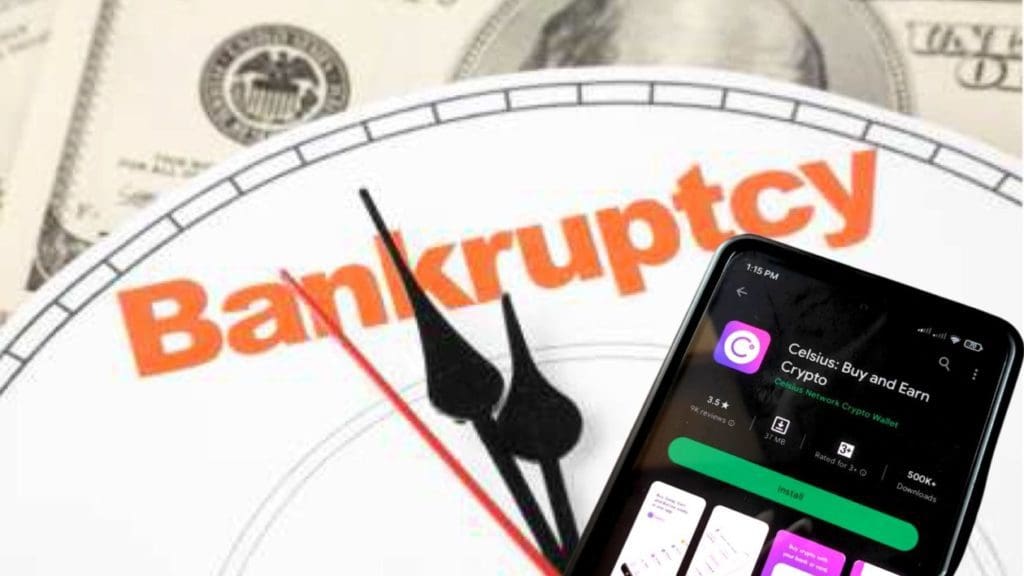As more institutions integrate elements of DeFi into their business models, the differentiation between DeFi (Decentralised Finance) and CeFi (Centralised finance) has become increasingly blurry.
Recent events have battered the DeFi world, highlighting confusion on what is and isn’t possible within a DeFi structure. For those who dub themselves as “DeFi” companies and work within the realms of cryptocurrency, how decentralized they are has come into question.
As the name suggests, CeFi pertains to financial institutions that follow the traditional organizational model, consisting of a hierarchy with a responsible party controlling the functions. The level of centralization can vary, bringing the distinction between CeFi and DeFi into murky waters.

“The distinction is one that the blockchain space has been struggling with for a while,” said John Sun, Founder and President of Spring Labs. “We’re on this continuum of centralization to decentralization. There’s no absolute decentralization. I don’t believe in that as a concept.”
An example of functions balancing on the edge of the distinction comes from the ethereum fork of 2016. Responding to a hack on The DAO, a prominent application running on the ethereum blockchain, the ethereum foundation decided to execute a “hard fork” and split the blockchain into ethereum and ethereum Classic.
Although ethereum was and continues to be considered a DeFi entity, this fork was seen as a centralized act by some, causing controversy within the community.
“The ethereum fork was a very centralized action,” he continued. “It was a small group of holders that came together to decide that this was the direction they were going to take. I think that spells out kind of what the future for these networks looks like.”
Financial Sovereignty and Governance structures hang in the balance
Sun, like many more in space, is skeptical of the existence of pure DeFi.
Although the concept of decentralization has been around for some time, blockchain infrastructure wasn’t brought forth until 2008 in the proposal for bitcoin. The influx of DeFi popularity is relatively recent, especially for integration into traditional processes, some citing the increase not until 2020.
The market’s relative lack of maturity means that many nuances remain unclear to industry players, regulators, and the general public.
For others, the distinction is simple.
“The distinction comes down to accessibility and control,” said Marcel Harmann, Founder, and CEO of THORWallet DEX. “CeFi provides custody services through financial intermediaries, replicating the machinations of the traditional financial system on modern technology. As such, investors’ assets are subject to the rules enacted by the exchange authorities, and in some cases, those assets may be frozen. For example, Binance and Celsius halted customer withdrawals during a brief period of panic.”
“On the contrary, DeFi was born out of a demand for a permissionless system for digital asset exchange. This ensures that anyone with a smartphone can always access the financial system, irrespective of their circumstances.”
“DeFi is built on smart contracts––lines of code that dictate the parameters of the protocol and act as transaction guarantors. This removes the need to rely on financial intermediaries and enshrines personal ownership of assets in code.”
“At the end of the day, whether you prefer DeFi or CeFi comes down to how much you value financial sovereignty.”
Daniel Keller, CSO, and co-founder of Flux, also felt the distinction is clear. “The critical difference between the two is the governance structure,” he said.
“Extrapolating from that, the decision-making processes involved in decentralized infrastructure are disseminated to the community as a whole rather than a select few. Each offers its unique benefits and challenges; placing the governance model in the hands of the people will also challenge CeFi to build better and more secure projects.”

DeFi lending in the economic downturn
The crash and burn of now bankrupt CeFi crypto lender Celsius is still underway. Many experts are highlighting its failure compared to the resilience of DeFi lending protocol AAVE, which has continued functioning, underpinned by its decentralized structure and use of non-custodial wallets.
With AAVE, users can participate as either a borrower or a lender. Collateral for each loan is pledged within a wallet only accessed by the users’ keys. A protocol connected to the wallet underlies the loan, automatically activating liquidation in the case of a significant loss of value of the collateral or non-payment and canceling the loan on repayment.
AAVE itself provides the infrastructure and protocol code. The loan itself is between users.
“Essentially, CeFi gives users an IOU,” said Harmann. “If they get into hot water, centralized providers will protect themselves first.”
“The economic fallout came as a result of CeFi. Decentralized technologies allow for coordinating resources and efforts that would otherwise be distributed. This helps eliminate obstructions to the global financial system, poking a hole in the bubble of centralized wealth.”
In the case of the crypto and economic downturn, such DeFi protocols automatically execute the necessary transactions. Theoretically, no entity or individual can change it.
“DeFi has been playing out really well, despite the economic pressures,” he continued. “Platforms like Curve Finance, AAVE, MakerDAO, and THORChain have continued operating as planned.”
“You saw that DeFi kept working perfectly fine (in the recent downturn),” said Eduardo Abreu, Chief Strategy Officer at Amberfi. “There was stress, and the system worked. You got liquidated if the price went down and your loan was underwater. That was what would have been expected. No intermediary was left holding the bag; it was just you.”
Three core principles
Bankless DAO contributor, Above Average Joe (AAJ), explained that to distinguish between the two. Three core principles exist in pure DeFi (and decentralization in general) and not CeFi.
1 – Permissionlessness
2 – Censorship Resistance
3 – Credible Neutrality
These principles create an environment of absolute neutrality based on running systems according to predefined code.
Through credible neutrality, systematic barriers to entry are reduced significantly, and access can be achieved pseudonymously, creating a level playing field at the point of entry.
Permissionlessness refers to the open nature of the blockchain. To be DeFi, blockchains must allow everyone who wishes access to the consensus mechanisms which determine its governance on a neutral basis. There remain specific barriers to entry regarding knowledge of the system and technological access, as many blockchains still require advanced hardware and a reliable internet connection to participate in governance.
“I think there’s a lot of naivety that they could even think they could ban proof of work. The whole concept behind decentralisation is not asking for permission. So I mean, they could attempt to ban it but I don’t think they could.”
Daniel Keller, Co-Founder and CSO of Flux
Censorship resistance stems from this permissionless. It allows transactions and processes to be carried out when they fulfill the predefined requisites, regardless of whether someone deems them to be wrong or not. As no one entity determines the morality and correctness of the process, it cannot be censored. This provides resistance from external organizations and structures to change operations and attempts to cancel specific transactions and shut down blockchains.
Due to these three principles, AAJ said that within a DeFi structure, several processes are impossible, such as the seizure of funds by a central entity, unequal access to seigniorage, and sanctions.
Permissionlessness and Tornado Cash
In 2022 we have been witness to several DeFi-related scandals.
An event that has caused much controversy is the sanction of the crypto mixer, Tornado Cash, and the arrest of a developer associated. Alexey Pertsev, the developer behind the Ethereum-based Tornado Cash protocol, was arrested on suspicion of “involvement in concealing criminal financial flows and facilitating money laundering.”
The OFAC also claimed that Tornado Cash “repeatedly failed to impose effective controls” to mitigate these risks.
Like many DeFi projects, Tornado Cash is open-source, allowing anyone to access and code according to their needs for the transaction.
Some have called it unconstitutional and a threat to open-source development. Cryptocurrency lobbyists are taking to the courts to fight the sanction, and many within the community are recommending noncompliance.
On handing over control to its community in 2020, Tornado’s original team posted a blog post that stated, “From now on, Tornado Cash is largely living by the precepts that code is the law. The Tornado Cash smart contracts are running on ethereum, and the community has the decision on whether or not to use our tools.”
“No one can modify the smart contracts, and the protocol is decentralized and unstoppable, as long as ethereum isn’t changed or taken down…We also do not control or have any role in relaying transactions. The relayer’s network is independent of our team and is set up by folks running a node following the instructions.”
Treating a DeFi structure with a CeFi mindset
Given the three principles of DeFi indicated above, sanctions could be difficult to effectively implement as the code should work with resilience to external influence from any government. More than this, technically, developers who wrote the code should have protection from arrest for the principles associated with transactions.
“Being a mixer pool that helps secure the source of funds, Tornado Cash, could be used for real good, or it could be used for evil,” said Sun. “There’s so many of these applications like that on the blockchain.”
Some see the act against Tornado Cash as a knee-jerk reaction, which could be undermined when assessing the makeup of truly decentralized systems. Meanwhile, many are concerned by the implications on the development of DeFi as a whole.
“The adversity faced by DeFi is coming predominantly from regulatory authorities, who are hastily trying to enforce traditional financial legislation on unconventional technological processes,” said Harmann.
Coin Center, heading lobbying efforts against Tornado Cash sanctions, stated, “As we suspected, we believe that OFAC has overstepped its legal authority by adding certain Tornado Cash smart contract addresses to the SDN List, that this action potentially violates constitutional rights to due process and free speech, and that OFAC has not adequately acted to mitigate the foreseeable impact its action would have on innocent Americans.”
Rash decisions could limit development
Many are already considering DeFi structures’ benefits in evolving their processes.
“As DeFi matures, more people will want to use both Cefi and DeFi for very different reasons,” said Keller. “We are already seeing institutional involvement in popular DeFi protocols like AAVE due to the governance structure and immutability the over-collateralization structure has created on their respective ecosystems.”
DeFi’s show of strength where CeFi has faltered primarily could be (and is) accredited to its decentalisation. This strength could be at risk if treated in a way that undermines the principles which create that decentralization.
“Ultimately, the goal of many truly decentralized platforms is to delegate authority among its participants,” concluded Harmann. “This community-first approach engages people like never before, affording users the chance to contribute to a project and identify with like-minded people from all over the world. The sociopolitical implications of this cannot be overlooked.”


